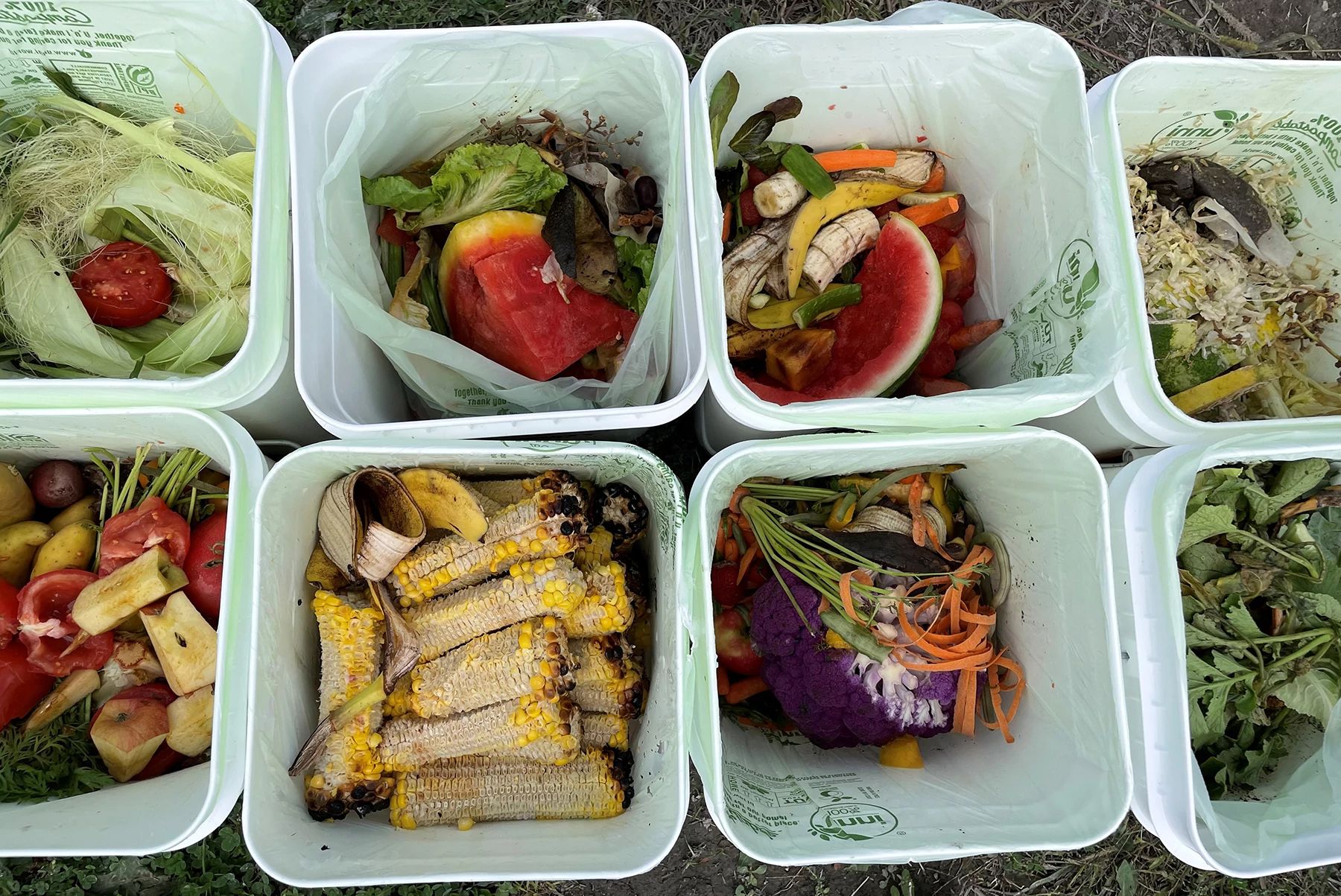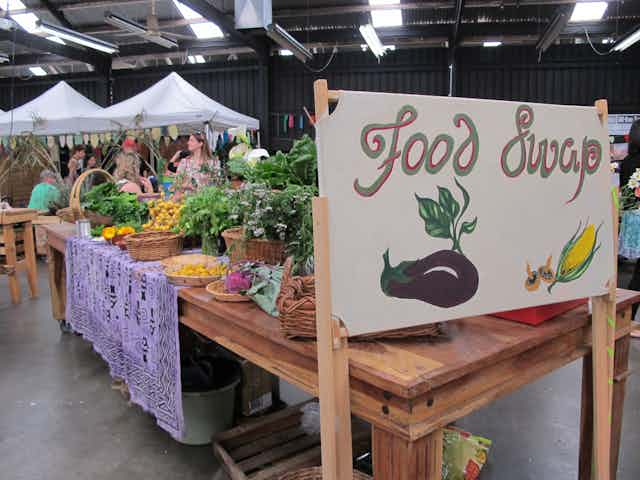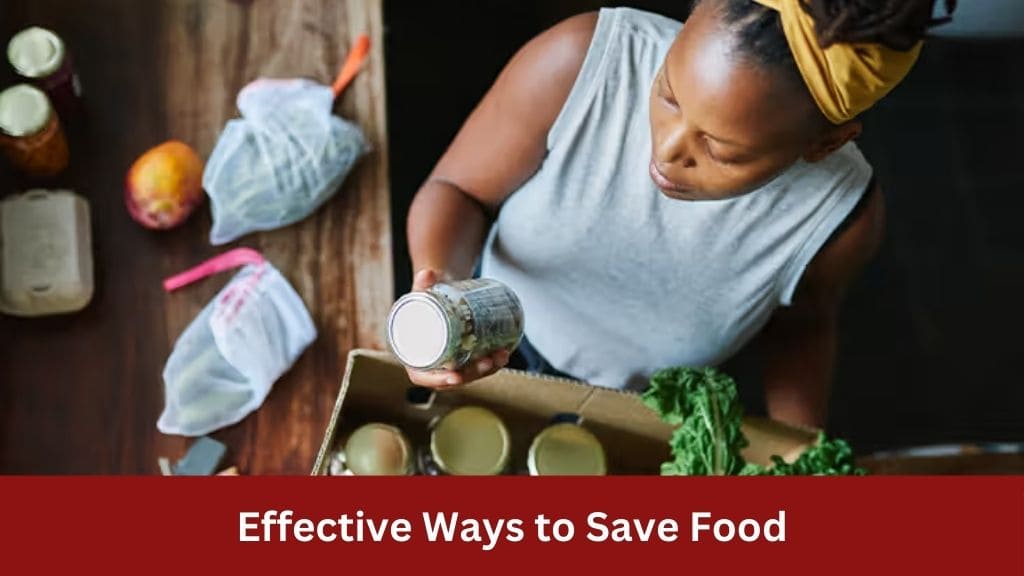Food waste is a significant global issue with far-reaching consequences for both the environment and society. In the United States alone, billions of pounds of food are wasted each year, contributing to greenhouse gas emissions, water waste, and economic inefficiency. However, there are numerous strategies that individuals, households, and communities can implement to reduce food waste and promote sustainability. In this comprehensive guide, we’ll explore various ways to save food, from mindful shopping habits to creative culinary techniques.
Understanding the Impact of Food Waste
Before delving into practical solutions, it’s essential to grasp the extent of the problem and its implications. Food waste occurs at every stage of the food supply chain, from production and distribution to consumption and disposal. According to the United Nations Food and Agriculture Organization (FAO), approximately one-third of all food produced for human consumption is lost or wasted globally each year. This wastage not only squanders valuable resources but also exacerbates hunger, strains natural ecosystems, and contributes to climate change.
Environmental Consequences
Greenhouse Gas Emissions: When food waste decomposes in landfills, it releases methane, a potent greenhouse gas that contributes to climate change. Methane has a significantly higher warming potential than carbon dioxide, making it a major driver of global warming.
Resource Depletion: The production of food requires vast amounts of resources, including water, energy, and agricultural inputs like fertilizers and pesticides. When food is wasted, these resources are squandered, exacerbating environmental degradation and resource scarcity.
Land Use and Deforestation: To meet the demand for food, vast swathes of land are cleared for agricultural purposes, leading to deforestation and habitat destruction. Food waste perpetuates this cycle of land conversion, intensifying pressure on ecosystems and biodiversity.
Social and Economic Impact
Food Insecurity: Paradoxically, while billions of pounds of food are wasted annually, millions of people worldwide suffer from food insecurity and malnutrition. Food waste exacerbates inequalities in access to nutritious food, perpetuating hunger and poverty.
Economic Losses: Food waste incurs economic costs at every stage of the supply chain, from production and distribution to consumption and disposal. Farmers lose revenue due to surplus crops left unharvested or rejected by retailers, while consumers waste money on food they never consume.
Wasted Labor and Resources: The labor, energy, and resources invested in producing, harvesting, transporting, and processing food are wasted when it ends up in landfills. This inefficiency undermines the sustainability and resilience of food systems, exacerbating global food security challenges.
Food waste is a multifaceted issue with wide-ranging consequences for the environment, society, and economy. Delving deeper into the various dimensions of its impact provides valuable insights into the urgency of addressing this global challenge.
Ethical Considerations
Ethical Imperatives: In a world where millions of people go hungry every day, wasting food raises ethical questions about resource allocation, social justice, and human rights. Reducing food waste is not just a matter of environmental stewardship but also a moral imperative rooted in principles of equity and solidarity.
Cultural and Societal Norms: Cultural attitudes and societal norms shape perceptions of food waste and consumption patterns. Addressing these cultural barriers requires a nuanced understanding of food preferences, traditions, and behaviors, as well as targeted interventions to promote behavior change.
Practical Strategies to Minimize Food Waste
Mindful Shopping Habits
- Make a Shopping List: Plan meals in advance and create a comprehensive shopping list to avoid impulse purchases and ensure you only buy what you need.
- Shop Smart: Prioritize fresh produce with a shorter shelf life and opt for imperfect or “ugly” fruits and vegetables, which are often discarded despite being perfectly edible.
- Understand Expiration Dates: Familiarize yourself with date labels such as “sell by,” “use by,” and “best before” to distinguish between food safety and quality.
Mindful shopping habits play a crucial role in reducing food waste by empowering consumers to make informed choices, minimize overconsumption, and maximize the utility of purchased items. Delving deeper into the principles of mindful shopping illuminates strategies for cultivating a more sustainable and conscientious approach to grocery shopping.
Planning and Preparation
Meal Planning: Engaging in meal planning involves strategically mapping out meals for the week, considering dietary preferences, nutritional needs, and ingredient availability. By planning meals in advance, individuals can create shopping lists that align with their consumption needs, reducing the likelihood of impulse purchases and unplanned food waste.
Inventory Assessment: Before embarking on a shopping trip, conducting a thorough inventory assessment of existing pantry staples, perishable items, and freezer contents can prevent duplicate purchases and help prioritize items nearing expiration. Taking stock of what you already have on hand enables more accurate meal planning and ensures that perishable items are used before they spoil.
Conscious Consumption
Buy Only What You Need: Adopting a “buy only what you need” mentality involves resisting the temptation to stockpile excess food items or succumb to bulk-buying promotions. Instead, prioritize purchasing quantities that align with your consumption patterns and household needs, thereby minimizing the risk of food spoilage and waste.
Mindful Selection: When selecting produce, prioritize items with minimal blemishes or imperfections, as these are often overlooked by consumers but are equally nutritious and flavorful. Embracing imperfect or “ugly” produce not only reduces food waste but also promotes a more inclusive and sustainable food system that values diversity and reduces aesthetic standards.
Understanding Expiration Dates
Date Label Awareness: Familiarizing oneself with date labels such as “sell by,” “use by,” and “best before” is essential for discerning between food safety and quality considerations. While these labels provide useful guidance, they do not necessarily indicate the point at which food becomes unsafe to consume. Understanding the distinction between date labels empowers consumers to make informed decisions about food freshness and safety, reducing unnecessary discards of perfectly edible items.
Trust Your Senses: In addition to relying on date labels, trusting your senses—sight, smell, and taste—can serve as reliable indicators of food quality and freshness. Inspecting perishable items for signs of spoilage, such as unusual odors, discoloration, or mold growth, can help identify items that should be consumed promptly or discarded to prevent foodborne illness.
Optimize Storage Practices

- Proper Refrigeration: Store perishable items like dairy, meat, and leftovers in the refrigerator at the appropriate temperature to prolong freshness and prevent spoilage.
- Utilize Freezer Space: Freeze excess perishable items, such as bread, fruits, and vegetables, before they spoil, and label them for easy identification.
- Invest in Storage Containers: Use airtight containers and resealable bags to store leftovers, meal prepped ingredients, and pantry staples, minimizing exposure to air and moisture.
Optimizing storage practices is essential for prolonging the freshness and usability of food items, thereby reducing the likelihood of spoilage and waste. By understanding the principles of proper storage and implementing effective strategies, individuals can maximize the shelf life of perishable items, minimize food waste, and optimize resource utilization.
Proper Refrigeration
Temperature Control: Maintaining the proper temperature in the refrigerator is critical for preserving the freshness and safety of perishable items. The refrigerator should be set at or below 40°F (4°C) to slow down the growth of bacteria and prevent food spoilage. Additionally, regular monitoring of refrigerator temperatures and calibration of settings can ensure optimal performance and energy efficiency.
Organized Storage: Organizing the refrigerator strategically can help prevent cross-contamination and ensure that perishable items are stored at their ideal conditions. Raw meats and seafood should be stored on the bottom shelf to prevent drippings from contaminating other foods, while dairy products and leftovers should be kept in designated areas with proper airflow.
Utilize Freezer Space
Flash Freezing: Flash freezing refers to rapidly freezing food items at very low temperatures to preserve their quality and freshness. When properly executed, flash freezing can prevent the formation of ice crystals and maintain the texture and flavor of frozen foods, making them more palatable upon thawing.
Labeling and Dating: Labeling and dating frozen items is essential for maintaining an organized freezer and ensuring that items are consumed before their quality deteriorates. Clearly labeling packages with the contents and date of freezing enables individuals to rotate stock and prioritize older items for consumption, reducing the risk of freezer burn and food waste.
Invest in Storage Containers
Airtight Containers: Investing in high-quality airtight containers and resealable bags is essential for preserving the freshness of perishable items and preventing exposure to air and moisture, which can accelerate spoilage. Airtight containers also help contain odors and prevent cross-contamination between different foods.
Vacuum Sealing: Vacuum sealing is a preservation technique that removes air from packaging before sealing it, thereby extending the shelf life of perishable items and reducing the risk of freezer burn. Vacuum-sealed packages can be stored in the freezer for extended periods without sacrificing quality or taste.
Embrace Meal Planning and Preparation

- Plan Ahead: Schedule weekly meals and snacks, considering ingredients on hand and upcoming expiration dates, to minimize food waste and streamline meal preparation.
- Batch Cooking: Prepare large batches of staple foods, such as grains, legumes, and sauces, and portion them for future meals to save time and reduce food waste.
- Repurpose Leftovers: Transform leftover ingredients and meals into new dishes, such as soups, salads, stir-fries, and casseroles, to prevent them from going to waste.
Embracing meal planning and preparation involves proactive strategizing and organization to streamline the cooking process, minimize food waste, and maximize the utilization of ingredients. By incorporating meal planning and preparation into their routines, individuals can save time, reduce stress, and cultivate healthier eating habits. Let’s delve deeper into the key principles and benefits of embracing meal planning and preparation.
Planning Ahead
Strategic Meal Planning: Meal planning entails scheduling meals for the week ahead, taking into account dietary preferences, nutritional requirements, and ingredient availability. By creating a comprehensive meal plan, individuals can anticipate their culinary needs, avoid last-minute decisions, and minimize the likelihood of impulse purchases or takeout meals.
Inventory Assessment: Before drafting a meal plan, it’s essential to conduct an inventory assessment of existing pantry staples, perishable items, and freezer contents. By taking stock of what ingredients are already on hand, individuals can avoid unnecessary purchases and prioritize the use of items nearing expiration, thereby minimizing food waste.
Batch Cooking
Efficient Batch Cooking: Batch cooking involves preparing large quantities of food in advance and portioning it into individual servings for future meals. This approach not only saves time and effort but also reduces the need for repetitive cooking tasks throughout the week. Batch cooking is particularly beneficial for busy individuals or families with hectic schedules, as it ensures that nutritious meals are readily available without resorting to convenience foods or takeout.
Freezing for Future Use: After batch cooking, leftovers or surplus portions can be frozen for future use, extending their shelf life and minimizing the risk of spoilage. Properly labeling and dating frozen meals enables individuals to keep track of their inventory and prioritize older items for consumption, reducing the likelihood of freezer burn or food waste.
Repurposing Leftovers
Creative Leftover Utilization: Repurposing leftovers involves transforming excess food from previous meals into new dishes or ingredients. For example, leftover roasted vegetables can be repurposed into a hearty soup or used as a topping for salads or grain bowls. By exercising creativity and resourcefulness, individuals can breathe new life into leftover ingredients and minimize waste.
Meal Components Versatility: Embracing versatility in meal components allows individuals to mix and match ingredients to create diverse and satisfying meals. For example, roasted chicken can be shredded and used in sandwiches, salads, or pasta dishes, while cooked grains can serve as a base for grain bowls, soups, or stir-fries. By repurposing meal components in different contexts, individuals can reduce monotony and maximize the utility of ingredients.
Reduce Food Scraps and Waste

- Composting: Establish a composting system for organic waste, including fruit and vegetable scraps, coffee grounds, and eggshells, to enrich soil and divert waste from landfills.
- Creative Cooking: Incorporate food scraps and trimmings into recipes, such as homemade vegetable broth, fruit preserves, and crisps, to maximize flavor and minimize waste.
- Regrow Produce: Harness the power of regenerative agriculture by regrowing vegetable scraps, such as lettuce, celery, and green onions, in water or soil to yield fresh produce at home.
Reducing food scraps and waste involves implementing strategies to minimize the disposal of edible food items and utilize ingredients to their fullest potential. By adopting mindful cooking practices and creative culinary techniques, individuals can reduce food waste, save money, and contribute to a more sustainable food system. Let’s explore deeper into the key principles and methods for reducing food scraps and waste.
Composting
Backyard Composting: Composting is a natural process that transforms organic waste, such as fruit and vegetable scraps, into nutrient-rich compost for gardening. Setting up a backyard composting system allows individuals to divert food scraps from landfills, reduce greenhouse gas emissions, and enrich soil health. Composting also serves as an educational opportunity for individuals to learn about the natural cycles of decomposition and soil regeneration.
Indoor Composting Options: For individuals without access to outdoor space, indoor composting options, such as vermicomposting (using worms to break down organic matter) or bokashi composting (fermenting food waste with beneficial microbes), offer viable alternatives. These compact composting methods can be implemented in apartments, condos, or small living spaces, providing an environmentally friendly solution for managing food scraps.
Creative Cooking Techniques
Repurposing Scraps: Repurposing food scraps involves transforming overlooked or underutilized ingredients into new dishes or components. For example, vegetable peels and trimmings can be used to make flavorful broth or stock, while stale bread can be transformed into breadcrumbs, croutons, or bread pudding. By exercising creativity and resourcefulness in the kitchen, individuals can minimize waste and maximize the culinary potential of every ingredient.
Whole Ingredient Utilization: Embracing whole ingredient utilization involves using all parts of a food item, including stems, leaves, and skins, to minimize waste. For example, broccoli stems can be thinly sliced and sautéed or blended into soups, while citrus peels can be candied or infused into vinegar or cocktails. By exploring innovative ways to use every part of an ingredient, individuals can unlock new flavors and textures while reducing food waste.
Conscious Consumption
Portion Control: Practicing portion control and mindful eating habits can help individuals avoid overbuying or preparing more food than necessary, reducing the likelihood of leftovers and food waste. By serving smaller portions and listening to hunger cues, individuals can enjoy meals without excess and minimize the need for discarding uneaten food.
Storage Optimization: Proper storage of perishable items, such as fruits, vegetables, and leftovers, is essential for prolonging their freshness and preventing spoilage. Utilizing airtight containers, resealable bags, and proper refrigeration techniques can help extend the shelf life of food items and minimize the risk of food waste due to improper storage conditions.
Promote Community Engagement and Collaboration

- Food Sharing Networks: Participate in community-based initiatives, such as food swaps, gleaning programs, and neighborhood fridges, to redistribute surplus food and build solidarity.
- Educational Outreach: Organize workshops, cooking demonstrations, and educational campaigns to raise awareness about food waste reduction and empower individuals to take action.
- Policy Advocacy: Advocate for policy changes at the local, national, and international levels to incentivize food waste reduction, support sustainable food systems, and address systemic barriers.
Promoting community engagement and collaboration involves mobilizing collective action to address food waste at the local level through partnerships, initiatives, and shared resources. By fostering a sense of solidarity and collective responsibility, communities can leverage their collective strengths to reduce food waste, redistribute surplus food, and build resilient and inclusive food systems. Let’s delve deeper into the key principles and methods for promoting community engagement and collaboration in the fight against food waste.
Food Sharing Networks
Food Swaps: Food swaps provide a platform for community members to exchange surplus produce, homemade goods, and pantry staples, reducing food waste and fostering community connections. Participants can swap excess garden produce, baked goods, or preserved foods, enabling individuals to share resources and diversify their culinary experiences.
Gleaning Programs: Gleaning programs involve harvesting surplus crops from farms, orchards, or gardens that would otherwise go to waste due to cosmetic imperfections, overabundance, or market demand. Volunteers collect, sort, and distribute gleaned produce to local food banks, community kitchens, or shelters, ensuring that nutritious food reaches those in need while minimizing agricultural waste.
Educational Outreach
Workshops and Cooking Demonstrations: Hosting workshops, cooking demonstrations, and educational events provides opportunities for community members to learn about food waste reduction strategies, culinary skills, and sustainable cooking practices. These interactive experiences empower individuals to make informed choices about food consumption, storage, and preparation, fostering a culture of waste reduction and resourcefulness.
Awareness Campaigns: Launching awareness campaigns and public outreach initiatives raises visibility and mobilizes support for food waste reduction efforts within the community. Through social media campaigns, public events, and media partnerships, communities can educate residents about the environmental, social, and economic impacts of food waste, inspiring collective action and behavior change.
Policy Advocacy
Local Policy Initiatives: Advocating for local policy initiatives, such as municipal composting programs, food recovery ordinances, and incentives for food waste reduction, can catalyze systemic change and support sustainable food practices at the community level. By engaging with local government officials, stakeholders, and advocacy groups, communities can influence policy decisions and create enabling environments for food waste reduction efforts.
Food Redistribution Networks: Establishing food redistribution networks, such as community fridges, food rescue organizations, or surplus food donation programs, facilitates the efficient redistribution of surplus food from businesses, retailers, and individuals to those in need. These networks promote food security, reduce food waste, and foster solidarity within the community by connecting surplus food with individuals facing food insecurity or financial hardship.
Conclusion
By implementing these practical strategies and adopting a mindset of mindful consumption, individuals can play a pivotal role in reducing food waste, conserving resources, and promoting sustainability. From mindful shopping habits and optimized storage practices to creative culinary techniques and community collaboration, every action counts in the collective effort to build a more resilient and equitable food system. Together, let us strive to cultivate a culture of food conservation and stewardship for the well-being of our planet and future generations.





